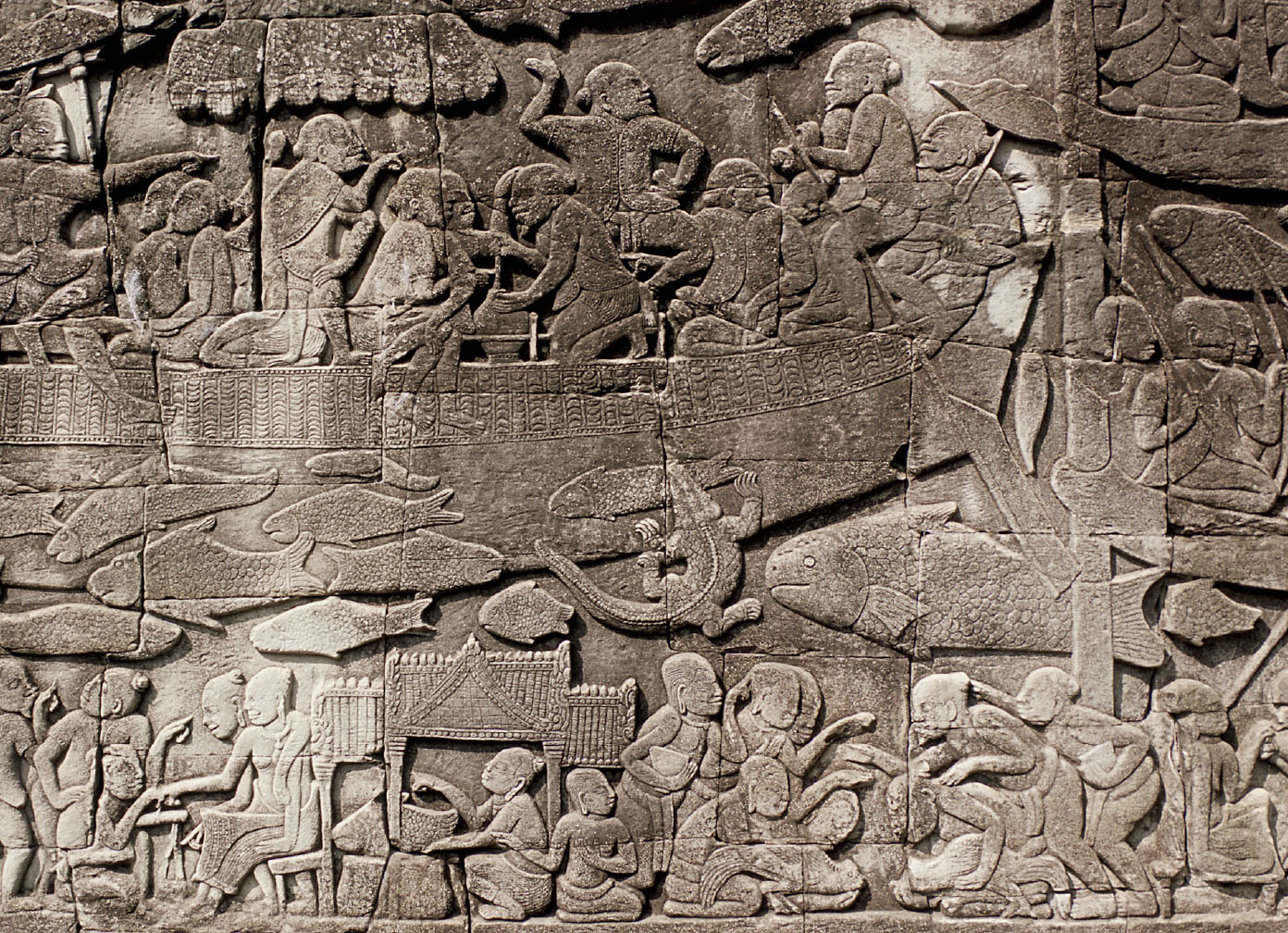Understanding World Societies:
Printed Page 352
State Formation and Indian Influences
Southeast Asia was long a crossroads. Traders from China, India, Africa, and Europe either passed through the region when traveling from the Indian to the Pacific Ocean, or came for its resources, notably spices.
The northern part of modern Vietnam was under Chinese political control off and on from the second century B.C.E. to the tenth century C.E. (see “Vietnam” in Chapter 7), but Indian influence was of much greater significance for the rest of Southeast Asia. The first state to appear in historical records, Funan, had its capital in southern Vietnam. In the first to sixth centuries C.E. Funan extended its control over much of Indochina and the Malay Peninsula. Merchants from northwest India would offload their goods and carry them across the narrowest part of the Malay Peninsula. The ports of Funan offered food and lodging to the merchants as they waited for the winds to shift to continue their voyages. Brahmin priests and Buddhist monks from India settled along with the traders, serving the Indian population and attracting local converts. Rulers often invited Indian priests and monks to serve under them.

Among the many relief sculptures at the temples of Angkor are depictions of royal processions, armies at war, trade, cooking, cockfighting, and other scenes of everyday life. In the relief shown here, the boats and fish convey something of the significance of the sea to life in Southeast Asia. (Hervé Champollion/akg-
After the decline of Funan, maritime trade continued to grow, and petty kingdoms appeared in many places. Indian traders frequently established small settlements, generally located on the coast. Contact with the local populations led to intermarriage and the creation of hybrid cultures. Local rulers often adopted Indian customs and values, embraced Hinduism and Buddhism, and learned Sanskrit, India’s classical literary language. Sanskrit gave different peoples a common mode of written expression, much as Chinese did in East Asia and Latin did in Europe.
When Indian traders, migrants, and adventurers entered mainland Southeast Asia, they encountered both long-
The most important mainland state was the Khmer (kuh-